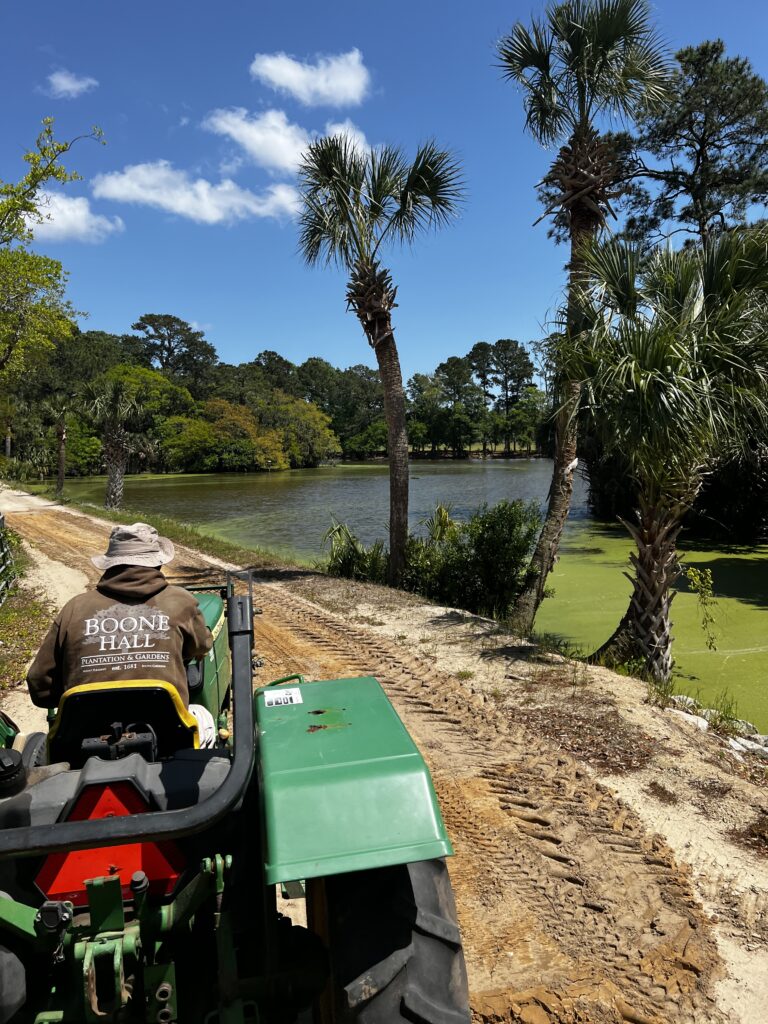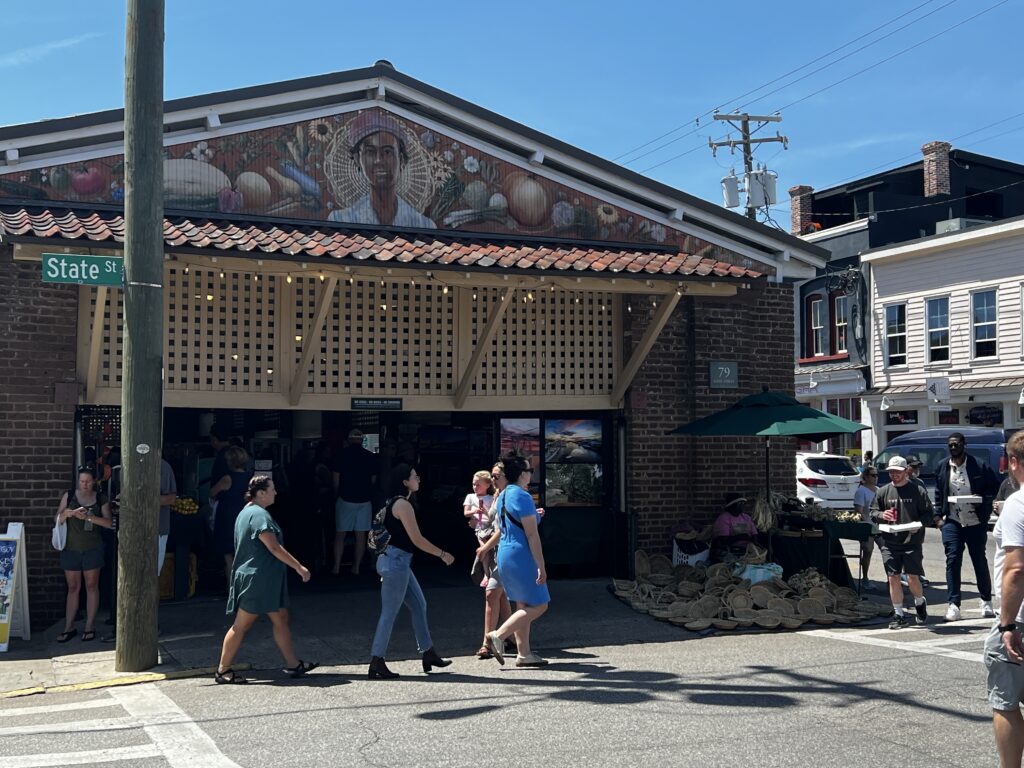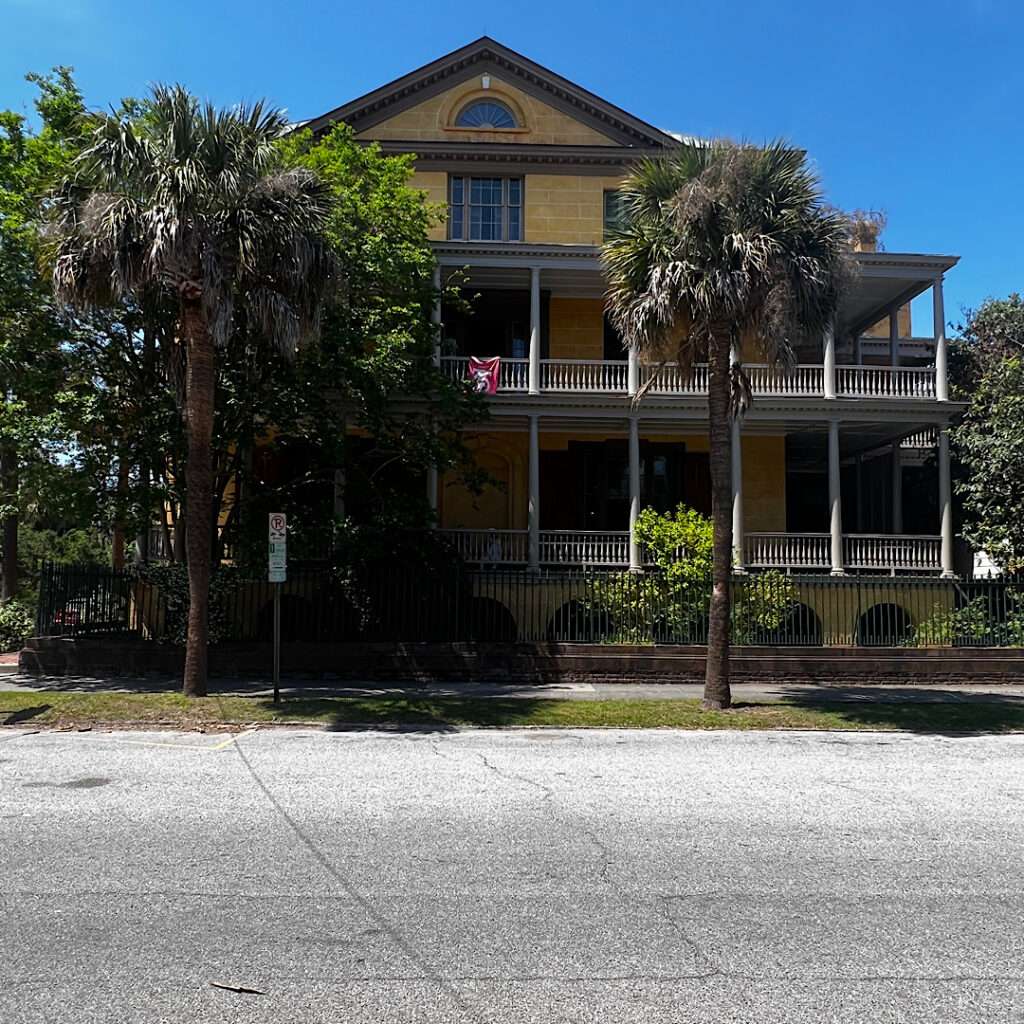- 71.8 miles
- 8 hours 16 minutes – includes about a half hour of hanging out in the harbor waiting to get in the marina
- 8.7 mph average speed
- 7-10 mph winds
We left early for our trip to Charleston and were in a convoy of about 5 boats for a good portion of the trip. It was a beautiful and calm day but a tad bit chilly on the flybridge. Once we got close to the marina, we had to hold up for about 30 minutes until the dock master was free to assist us with docking so we circled the area in front of the Battery and admired the beautiful antebellum homes. Docking in Charleston was challenging with the wind and current but Kevin did an excellent job, as usual! We wish we knew why the winds always kick up right when we are docking.

We were happy to see that our (non-Looper) friends, Zuby and Ilyas, who were on the beautiful Nordhaven that we met in Brunswick were docked at the marina and enjoyed dinner with them before they took off the next day.

Ellen was excited to meet Julie, a friend of hers since 6th grade, who lives in Mount Pleasant and do a bit of catching up over breakfast.

We had plans for the four of us to go to dinner later in the week but we ended up having to go home to attend to a family crisis. The good news is that while we were home we learned that Ellen’s second grandson would be born on May 3rd so we were able to go to Birmingham and help take care of Luke while they were in the hospital, meet Baby Levi at the hospital and help out once they all got home. More on that later!
Before we had to leave Charleston, we were able to do a good bit of sightseeing. We visited Boone Hall Plantation, Fort Sumter, the USS Yorktown, the Charleston City Market, the Aiken Rhett House and took a bus tour of Charleston.
Boone Hall Plantation was founded in 1681 by Englishman Major John Boone. The home that exists today was built in 1936 and is filled with beautiful antiques that would have been typical for a Coastal Carolina planter.

While at Boone Hall Plantation, we took a tractor led covered wagon tour of the 738 acres that make up the plantation. It is one of the oldest still working farms in America.



There is a beautiful barn that sits on the river and hosts special events. It was set up for a wedding the day we were we there and it was absolutely stunning.
There are nine original slave cabins which were built between 1790 and 1810 and currently house exhibits depicting how the slaves lived and worked.


We attended a live presentation of the Gullah culture which included storytelling, singing and dancing by a descendant of the Gullah people. The Gullah culture dates back to when West Africans were brought to Georgia (known as Geechie) and South Carolina (known as Gullah) and enslaved on plantations. Gullah is one of the oldest surviving African cultures in America with over a half a million descendants still carrying out the traditions of their ancestors.
The drive up to the plantation is lined with live oak trees and dubbed The Avenue of the Oaks. These trees were planted by the son of Major John Boone in 1743. The view is quite spectacular!

We took a ferry across Charleston Harbor to visit Fort Sumter. Fort Sumter is where the Civil War began on April 12, 1861 when the Confederacy fired the first shots on the Union troops in the fort.





The USS Yorktown was a World War II aircraft carrier. It was the United States’ tenth aircraft carrier and was commissioned in 1943. She is also known as “The Fighting Lady”. She was redesigned in the 1950’s and served in the Vietnam War and recovered the Apollo 8 astronauts and capsule in December, 1968 before being decommissioned in 1970.





We had a fantastic bus tour of downtown Charleston. We deboarded the bus at the Charleston City Market. The Charleston City Market was established in 1807 and is one of the nation’s oldest public markets.



We have not bought many souvenirs on the trip thus far but we did both want to purchase a sweetgrass basket made by one of the Gullah women. Sweetgrass baskets were originally used to winnow rice on the plantations and the craft has been passed down from generation to generation among the Gullah women since the 1700’s. We looked at a lot of different types of baskets, most were way out of our price range, before choosing the one below. It turns out we have good taste as choosing a sweetgrass basket as one of our few souvenirs as I later read that sweetgrass baskets are regarded as one of the nation’s most prized souvenirs and one of the oldest West African art forms in America.
The lady that made our basket is Beverly Grant. She was born on Boone Hall Plantation and has been making baskets since she was nine years old. Both her mother and grandmother worked on the plantation.


Photos from a trip to Charleston would not be complete without a picture of the famous Rainbow Row, a row of 13 brightly painted houses along the waterfront. The homes were built in around 1740 and merchants would have their businesses on the first floors and live on the second floor.


Our final tourist destination in Charleston was the Aiken-Rhett House. The Aiken-Rhett House was built in 1820 and then expanded by Governor and Mrs. William Aiken, Jr in the 1830’s and 1850’s. Rather than being restored, the home has been “preserved-as-found” by the Historic Charleston Foundation when they assumed ownership of it in 1995. The slave quarters are the same as they were in the 1850’s.



As our time in Charleston came to and end, we traveled home to Atlanta for a week and then Birmingham for a week where Ellen’s second grandson, Levi, was born and joins big brother, Luke!
